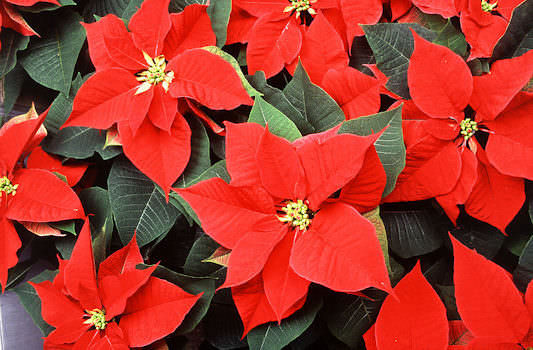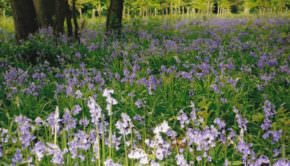Plant of the Month: The Poinsettia
The poinsettia belongs to the Euphorbia family and is, in fact, a small shrub or tree which was once thought of as a weed. It is a native of Southern Mexico where it can grow to 10 – 15 feet in height and has leaves that are 6 to 8 inches across. The red leaves are not flowers but bracts and are produced to attract insects to the tiny flowers around which they grow. From the 14th to the 16th centuries the Aztecs used the sap to help control fevers and the leaves to make a reddish/purple fabric dye for clothing. Joel Roberts Poinsett, botanist, physician and the first United States Ambassador to Mexico discovered the plant in 1828 sending cuttings back to his plantation in South Carolina and Poinsettia Day is still celebrated in the USA to mark the anniversary of his death. There are many names for the poinsettia and legends. The Aztecs called the poinsettia ‘Love Stars’ because they thought the bracts were coloured by drops of blood from an Aztec goddess who died of a broken heart. In Mexico and Guatemala, legend says that a poor girl called Pepita had no gift for the baby Jesus at the Christmas Eve service so picked some weeds growing at the side of the road. She put them by the nativity scene in the Chapel and immediately they turned into bright red flowers. This was thought of as a miracle and the flowers became known as the ‘Flowers of the Holy Night’. Other names include the lobster flower, flame-leaf flower and in Spain the Easter Flower.
Did You Know?
- The poinsettia didn’t arrive in the UK until the late 1800s.
- Although it is not poisonous if eaten, it can cause mild nausea or vomiting not only in humans but in pets as well.
- People with a latex allergy may suffer an allergic reaction to the sap.
- There are over a 100 varieties of poinsettias now, but red is still the most popular.


